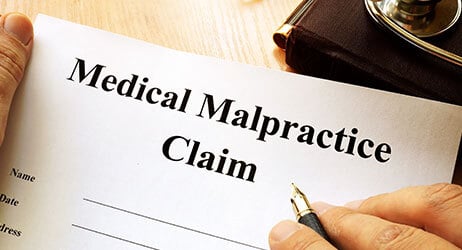Medical malpractice cases are complex legal proceedings that require meticulous preparation and presentation of evidence. To prove medical negligence, plaintiffs must gather a substantial amount of documentation that demonstrates the healthcare provider’s breach of the standard of care, resulting in harm or injury.
-
Medical Records
Medical records are the foundation of any medical malpractice case. They include:
A. Patient’s Medical History: Gather comprehensive records of the patient’s medical history, including prior illnesses, allergies, medications, and any pre-existing conditions.
B. Treatment Records: Obtain all relevant medical records pertaining to the patient’s treatment, such as doctor’s notes, progress reports, test results, surgical notes, and prescriptions.
C. Radiology and Imaging Reports: Include X-rays, MRIs, CT scans, and other diagnostic images, along with the interpreting radiologist’s reports.
D. Laboratory Reports: Gather lab test results, pathology reports, and any other diagnostic tests that were conducted.
E. Consultation Reports: If the patient saw multiple healthcare providers, collect records of consultations and referrals.
F. Medication Records: Include records of all medications prescribed, administered, or taken by the patient, along with any adverse reactions.
G. Nursing Notes: Nursing notes can provide valuable insights into the patient’s condition and the care provided.
-
Informed Consent Forms
Informed consent forms are essential documents in a medical malpractice case. They should confirm that the patient was informed about the risks, benefits, and alternatives of the treatment or procedure and gave their consent voluntarily.
-
Expert Opinions
Expert opinions are crucial to establish the standard of care and whether it was breached. You will need to retain medical experts who can review the case and provide their professional opinions regarding negligence. Their reports and testimonies are often pivotal in medical malpractice lawsuits.
-
Witness Statements
Statements from witnesses, including healthcare professionals who were present during the treatment or procedure, can be valuable in corroborating your claims of negligence. These statements can provide a firsthand account of what transpired.
-
Photographs and Visual Evidence
Photographs, videos, and other visual evidence can help illustrate the extent of the injuries or complications resulting from medical negligence. These visuals can be powerful tools in presenting your case to a judge and jury.
-
Correspondence and Communication
Any written communication between you and the healthcare provider, such as emails, letters, or text messages, should be preserved. These documents can be used to demonstrate attempts at resolution or to establish a timeline of events.
-
Billing and Financial Records
Billing records can provide insights into the costs associated with the medical treatment or procedure, which may be relevant in calculating damages. Additionally, these records can help establish a link between the treatment and any subsequent medical expenses.
-
Hospital Policies and Protocols
Obtain copies of the hospital’s policies and protocols, as well as any relevant guidelines, to demonstrate whether the healthcare provider adhered to established standards of care.
-
Medical Board Records
Check if the healthcare provider has a history of disciplinary actions or malpractice claims with the state medical board. Such records can help establish a pattern of negligence.
-
Documentation of Damages
To seek compensation for damages, you’ll need to provide documentation of the harm caused by the medical negligence. This includes medical bills, receipts for out-of-pocket expenses, records of lost wages, and any other evidence related to your economic losses.
-
Psychological Records
In some cases, medical malpractice can lead to emotional or psychological trauma. If applicable, include psychological records or evaluations to support your claims of emotional distress.
-
Preparing a Chronology
Compile a chronological timeline of events related to the medical treatment or procedure, including dates, actions taken, and people involved. This can help attorneys and experts assess the case more effectively.
Medical malpractice cases require comprehensive documentation to build a strong legal argument. Gathering and organizing the necessary documentation is a crucial step in seeking justice for medical negligence. To increase your chances of success, consult with experienced medical malpractice attorneys who can guide you through the process and ensure that all essential documents are in order. With the right evidence and legal representation, you can pursue a medical malpractice case with confidence.


 Necessary Documentation in a Medical Malpractice Case
Necessary Documentation in a Medical Malpractice Case 

